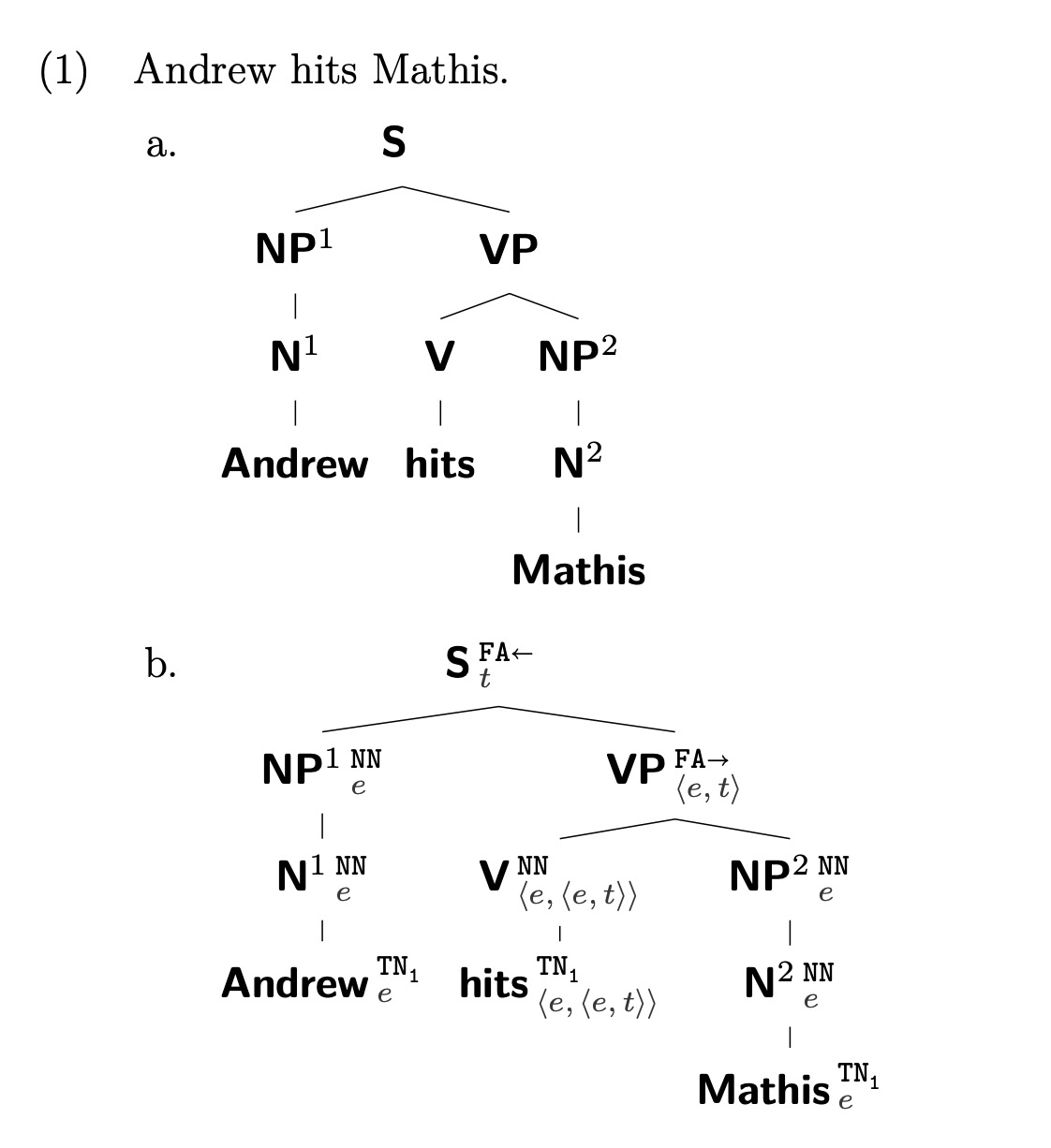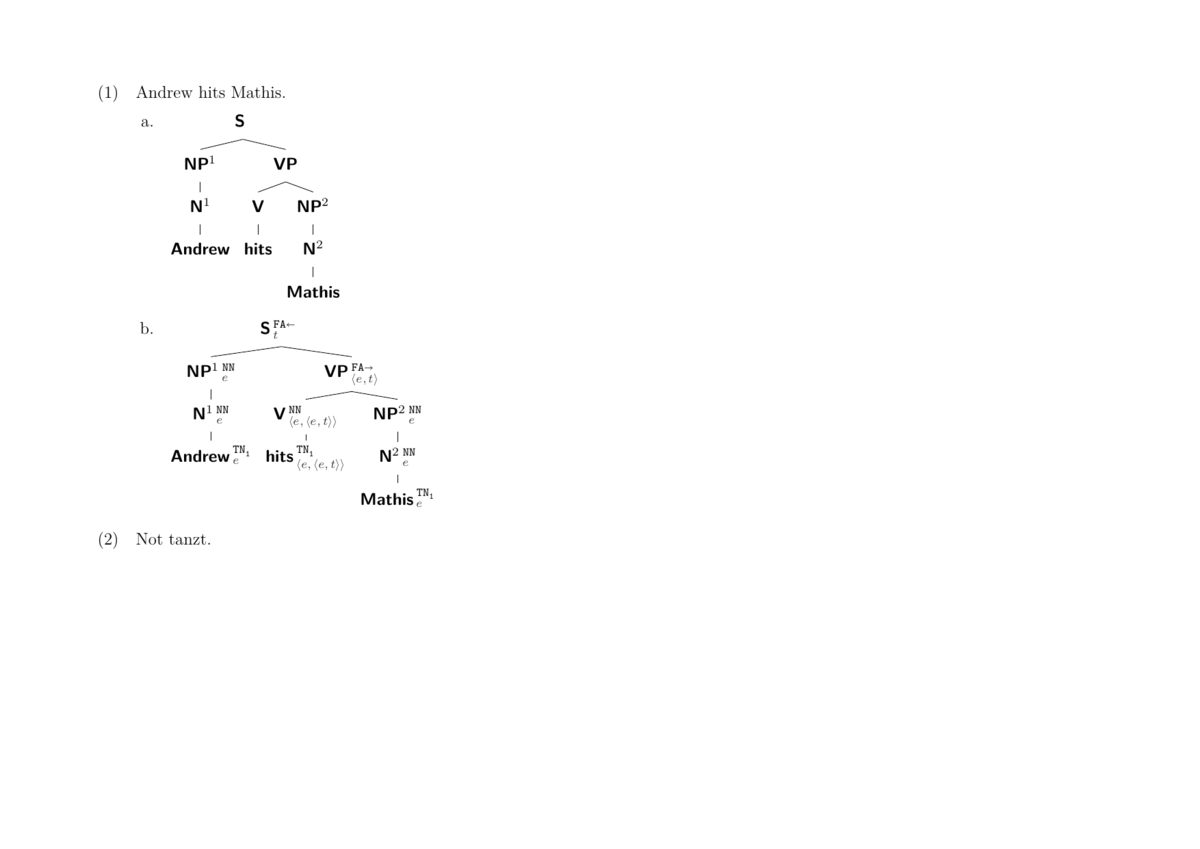SemTree — Automatic Generation of Type-and-Rule-Annotated qtree Trees with Python
https://github.com/mkthalmann/rule-and-type-parse
The following description is taken directly from the README of the associated Github page. This script is a very simple program that parses LaTeX TikZ qtree1 strings and outputs the same tree annotated with semantic types and the rules of composition (Heim-&-Kratzer-style) that led to that type. Being simple, the script comes with a number of restrictions some of which I’ll detail below.
As an aside, my implementation is the offspring of a desire to program, rather than one to innovate. There are certainly better and more thought-out alternatives around.
1 For TikZ itself, see https://www.ctan.org/pkg/pgf. ↩︎
Getting Started
# lexicon that includes the semantic types
lex = {"e": ["Andrew", "Mathis"], "<e, t>": ["hits"]}
# define the tree that is to be annotated
tree_string = "[.\\node(top){S }; [.NP^1 [.N^1 Andrew ] ] [.VP [.V hits ] [.NP^2 [.N^2 Mathis ] ] ] ]"
# save the output to a LaTeX file
with open("LaTeX/treeparses.tex", "w") as f:
f.write(tree_to_latex(tree_string, lex))Examples
Single Image
The input string in (1) produces the output below (once the corresponding (Xe)LaTeX code is compiled to pdf).
[.\\node(top){S }; [.NP^1 [.N^1 Andrew ] ] [.VP [.V hits ] [.NP^2 [.N^2 Mathis ] ] ] ]

Multipage PDF
